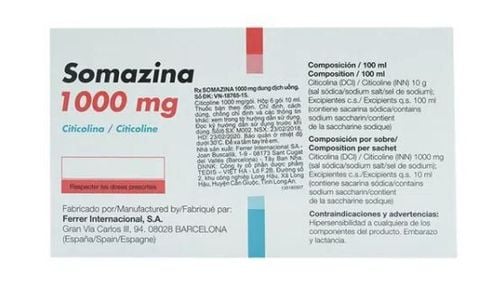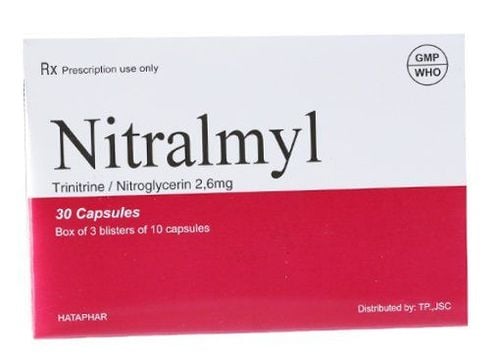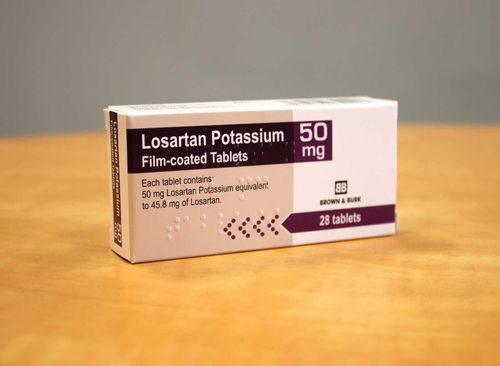This is an automatically translated article.
According to statistics, there are 2.7 million Americans with atrial fibrillation with an increased risk of stroke. Taking blood thinners (anticoagulants) can significantly reduce the risk of stroke by 50 to 60 percent.
1. Stroke in patients with atrial fibrillation
Cerebrovascular accident , also known as stroke , occurs when a blood clot blocks blood flow to the brain; Brain cells lose oxygen and slowly die. In people with atrial fibrillation, blood flow slows in the top chambers of the heart and blood clots can form there. When a blood clot breaks off, they can travel to the brain and cause a stroke. Therefore, blood thinners have been indicated in the prevention of stroke in patients with atrial fibrillation. Blood thinners, or anticoagulants, reduce the risk of blood clots forming in the heart, which in turn reduces the risk of stroke. However, up to half of people with atrial fibrillation do not take this drug. There are two main reasons as follows:
Anticoagulants are only prophylactic, not symptomatic, so taking them doesn't show immediate results to the patient. They can cause bleeding. "Most drugs are used to improve a patient's sensation or function, but anticoagulants do not," said the director of the FDA's Office of Drug Evaluation. It's a preventative drug, used to prevent strokes in otherwise healthy people."
When treatment is successful, the patient's risk of stroke is significantly reduced, but the medication does not improve the symptoms of atrial fibrillation. Therefore, patients do not feel any significant benefit from its use. Meanwhile, they are well aware of the downside of taking the drug - the inconvenience, the bleeding side effects, and the cost. But if patients avoid anticoagulants for the reasons mentioned above, they put themselves at risk of irreversible brain damage and disability. The benefits of reducing stroke risk clearly outweigh the risks and inconveniences of these blood-thinning drugs.
MORE: Atrial fibrillation and stroke risk
2. New blood thinners
In recent years, FDA has approved 4 blood thinners including:
Dabigatran (Pradaxa) Rivaroxaban (Xarelto) Apixiban (Eliquis) Edoxaban (Savaysa). Along with warfarin, which was approved 60 years ago, these drugs are used to prevent stroke in patients with atrial fibrillation.
There are some important differences between new and old classes of drugs. Warfarin interacts with certain medications and foods, making them less effective or more likely to cause bleeding. Therefore, the patient must be monitored with periodic Warfarin blood tests. While new drugs have fewer interactions and do not require blood monitoring.

Thuốc Dabigatran (Pradaxa) có tác dụng làm loãng máu
Although all anticoagulants reduce the risk of stroke caused by a blood clot from the heart, they increase the risk of a stroke caused by bleeding in the brain (hemorrhagic stroke). The new drugs have a lower risk of hemorrhagic stroke than warfarin, and the overall stroke rate (both from blood clots or bleeding) is lower with some of the new drugs.
Another difference is how quickly the drug starts and stops working. When starting warfarin, patients have to wait a few days for the drug to take effect. And when you stop using warfarin, it takes a few days for the effects to wear off.
And new drugs start to work quickly and the effects disappear quite quickly. For most patients, this is an advantage. However, experts warn: In rare cases, when a patient experiences life-threatening bleeding or requires urgent surgery, it is important to stop the effects of these drugs immediately.
For a small number of patients with life-threatening bleeding, reversal therapy can be used to counteract the effects of anticoagulants. For example, Vitamin K is the reversal agent of warfarin. The FDA recently approved the first reversible agent of Pradaxa, Praxbind (idarucizumab). Praxbind can be used in emergency situations where bleeding cannot be controlled due to the blood-thinning effects of Pradaxa.
MORE: The link between atrial fibrillation and stroke
3. Compare benefits and risks
Cerebrovascular accident often takes a toll on both the patient and the family. “A stroke can destroy or end a life.” Having a stroke can affect your ability to speak, eat, walk, work, care for yourself, and interact with others. So why are so many people not taking blood thinners? Both warfarin and newer drugs can cause bleeding, experts say, and fear of bleeding may be the main reason many patients don't use them.
But most bleeding side effects are not serious. This condition is only as minor as when you brush your teeth or shave. Sometimes more serious bleeding, such as internal bleeding, also occurs, but is rarely life-threatening.
Although bleeding is scary, it is usually treatable and does not cause permanent damage. In general, bleeding is much less dangerous than a stroke.

Thuốc có thể gây tác dụng phụ chảy máu không nghiêm trọng như chảy máu chân răng
4. Advice for patients
If you have atrial fibrillation, talk to your doctor to make sure you are getting the right treatment and to prevent a stroke. Some factors that increase your risk of having a stroke include:
65 years of age or older Having a history of stroke Diabetes High blood pressure Heart failure. The risk of stroke is also higher in women, patients with impaired kidney function, and those who have had a heart attack.
Some patients think they have only mild atrial fibrillation and do not need to take blood thinners. This is because atrial fibrillation causes few symptoms, or is transient and resolves on its own. In fact, stroke risk is more related to other factors and can be quite high. So even if you have mild or transient atrial fibrillation, you should still talk to your doctor about the most optimal treatment options.
5. Future goals
FDA is continuing to work with manufacturers to reverse the effects of some new anticoagulants. The agency hopes these drugs will reduce bleeding outcomes in some patients and increase acceptance of anticoagulants in the medical community. As a result, more patients with atrial fibrillation will be treated.
The underuse or abuse of anticoagulants in people with atrial fibrillation is an important, but manageable public health problem. For most patients with atrial fibrillation, taking anticoagulants as prescribed is the best thing you can do to reduce your risk of having a stroke. Newly studied anticoagulants work better than warfarin without blood monitoring. Existing patients can use new drugs, combined with occasional blood monitoring, to further reduce their risk of stroke and bleeding.
Please dial HOTLINE for more information or register for an appointment HERE. Download MyVinmec app to make appointments faster and to manage your bookings easily.
Reference source: fda.gov












